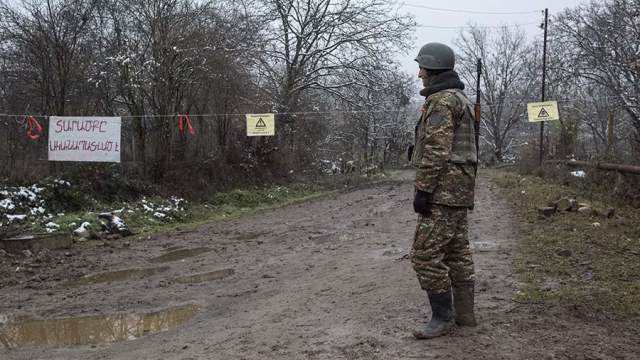Azerbaijani President Ilham Aliyev and Armenian Prime Minister Nikol Pashinyan have agreed to establish a direct line of communication at the level of defense ministers to prevent incidents around Nagorno-Karabakh. This became known on Friday, November 19.
"During the telephone talks, the leaders of Armenia and Azerbaijan agreed to establish a direct line of communication at the level of defense ministers, which will serve as a mechanism for preventing incidents," the statement on the website reads. The results of telephone conversations between the head of the European Council Charles Michel and the leaders of the two countries.
Michel also invited the two leaders to meet on December 15 in Brussels on the sidelines of the EU-Eastern Partnership summit to discuss the regional situation and ways to overcome tensions. Aliyev and Pashinyan agreed.
The situation on the border escalated on November 14, when the Azerbaijani Armed Forces attempted an offensive, after which a shootout ensued. As a result of the fighting, Armenia lost contact with 24 servicemen, one more was killed, 13 were captured.
The fire was stopped after talks between Russian Defense Minister Sergei Shoigu and Defense Ministers of Armenia and Azerbaijan Suren Papikyan and Zakir Hasanov on November 16. The Armenian military department confirmed the stabilization of the situation on the border.
Armenia and Azerbaijan have disputed the ownership of Nagorno-Karabakh since 1988. Then the region, where mostly Armenians live, declared its secession from the Azerbaijani SSR. During the 1992-1994 military conflict, Baku lost control over Karabakh. In September 2020, Baku took control of a number of settlements during military operations, in particular the villages of Gervend, Garakhanbeyli, Nyuzgar and Goradiz of the Fuzuli district and a number of villages of the Jabrayil district. On November 8, 2020, the city of Shusha came under the control of Azerbaijan.
In November 2020, Armenia and Azerbaijan, with the participation of Russia, signed an agreement on the cessation of hostilities in Nagorno-Karabakh. The document also provides for the introduction of Russian peacekeepers into the region, the exchange of prisoners between the parties to the conflict, the transfer of a number of regions of the region by Armenia to Azerbaijan and the return of refugees to Karabakh.

